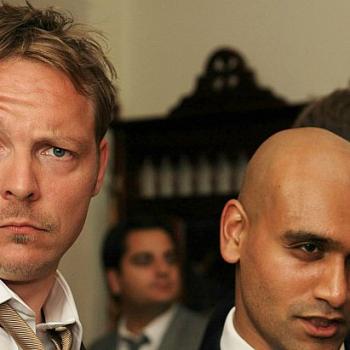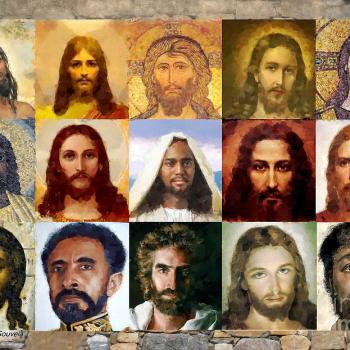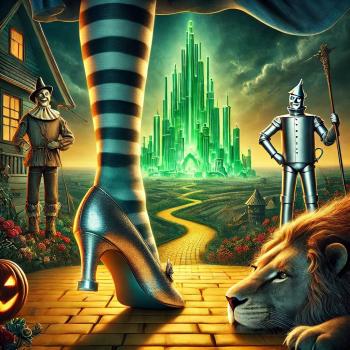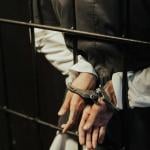I want to like Paul Thomas Anderson’s new film The Master, and perhaps my expectations were too high. If so,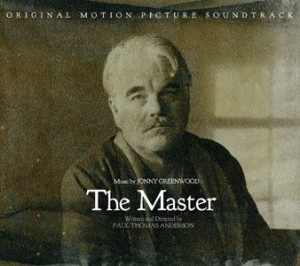 they were high for good reason: Anderson has set such a lofty bar with his previous work.
they were high for good reason: Anderson has set such a lofty bar with his previous work.
 they were high for good reason: Anderson has set such a lofty bar with his previous work.
they were high for good reason: Anderson has set such a lofty bar with his previous work.I haven’t seen his first feature-length film Hard Eight (1996), but since seeing Boogie Nights (1997) on DVD, I’ve eagerly anticipated each of his subsequent theatrical releases. I loved both Magnolia (1999) and Punch-Drunk Love (2002). And 2007’s There Will Be Blood was easily my favorite film of the decade for the 2000s.
When five years passed, and I heard Anderson was releasing a new film loosely based on the Scientology cult of L. Ron Hubbard and starring one of my favorite actors Philip Seymour Hoffman, I couldn’t wait to see it. And I drove two hours roundtrip to the American Film Institute for a screening in 70mm, instead of in the more standard 35mm. (See: “Why You Should Go Out Of Your Way To See The Master In 70mm.”)
I’m glad I made the effort to see the film in the format Anderson intended, but I’m not sure that I would recommend that other people rush out to see it, and I’m torn about seeing it a second time. I want to want to see it again, but that conflicted impulse is mixed in with my wish that the film had achieved a higher level of greatness. I would, however, gladly watch anything else from Anderson’s canon multiple times.
I am by no means saying that the film is a failure. Rather, Anderson, once again, set a high bar, but this time, he did not quite clear the height he set out to reach. I feel the same way about Joaquin Phoenix’s acting. He made some bold choices in how to portray Freddie Quell, an alcoholic, WWII veteran with PTSD. But ultimately I found his performance distracting, unconvincing, and difficult to connect with.
Perhaps the problem, at least for me, with with the screenplay. There are unarguably some great moments in the film, but the ‘sum’ never came together to become more than a series of individual parts. Particularly the sexual components of the film, many involving Freddie, seemed hamfisted and without subtlety.
At the same time, to highlight some of the brilliant component parts, I did order The Master soundtrack immediately upon returning home. And The Master might be worth seeing again — or seeing for the first time — just to pay attention to the soundtrack, and how it supplements the visuals and narrative. The composer Jonny Greenwood (of Radiohead fame), at least for now, seems to be Anderson’s art house version of Spielberg’s John Williams. And I found Greenwood’s soundtrack for The Master to be even more nuanced and sophisticated than his work for There Will be Blood, where the soundtrack was appropriately more in your face. I’m also a big fan of Threnody for the Victims of Hiroshima / Popcorn by Krzysztof Penderecki and Jonny Greenwood.
There is also breathtakingly beautiful cinematography in The Master — particularly the beach scenes, the desert motorcycle scene, and some of the close-ups — but I ultimately found that the aesthetics, even in 70mm, weren’t enough to make up for the problems in pacing and script. Anderson is no Malik (and perhaps that’s an unfair comparison), but for me, the aesthetics of Malik’s Tree of Life compensated for a slow, disjunctive narrative in a way that was not present in The Master.
I also found Anderson’s depiction of a religious cult dynamic to be unsophisticated, uncompelling, and unconvincing. The mood and style of the film was too distant and doesn’t have enough heat to draw the audience in to the cult dynamic. Hoffman is one of our great living actors, but I think the problem was, again, with the script he was given to work with.
Perhaps Anderson was trying to make a visual and narrative parallel to Greenwood’s modernist, atonal music. If so, I can appreciate, in theory, that film sometimes “just is.” I prefer MoMa to The Met, and recognize that modernist art like Abstract Expressionism isn’t intended to represent anything beyond the emotions the shape, colors, and lines themselves evoke. But for better or worse, I loved Greenwood’s music, whereas the film overall left me cold.
I’ve been reading a lot of reviews of The Master, and many reviewers, like me, seem to have wanted the film to be different than it is. But unlike my review, too many reviewers also seem to be grading The Master on a curve. It’s not that I think “The Master,” like the proverbial Emperor, has no clothes. But The Master is far too skimpily clad. I nevertheless eagerly anticipate Anderson’s next film, which is rumored to be based on Thomas Pynchon’s 2009 novel Inherent Vice.
So this weekend perhaps do see The Master, if only for the visuals, some great scenes, and the soundtrack. Or perhaps see Looper instead, which the film I plan to see next.
I welcome your feedback in the comment section about what I got wrong or right in this review.
The Rev. Dr. Carl Gregg is a trained spiritual director, a D.Min. graduate of San Francisco Theological Seminary, and the minister of the Unitarian Universalist Congregation of Frederick, Maryland. Follow him on Facebook (facebook.com/carlgregg) and Twitter (@carlgregg).
Learn more about Unitarian Universalism:
http://www.uua.org/beliefs/principles/index.shtml




